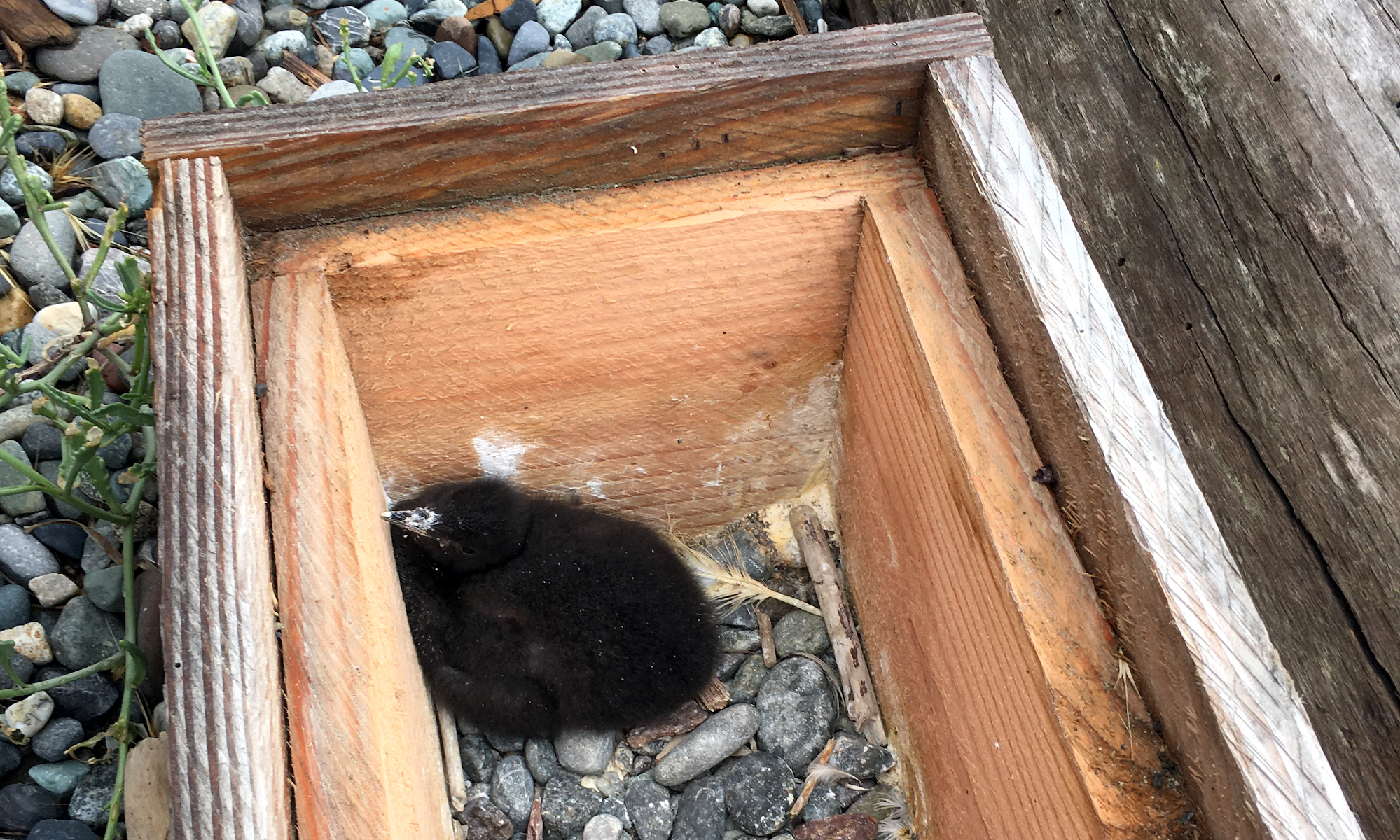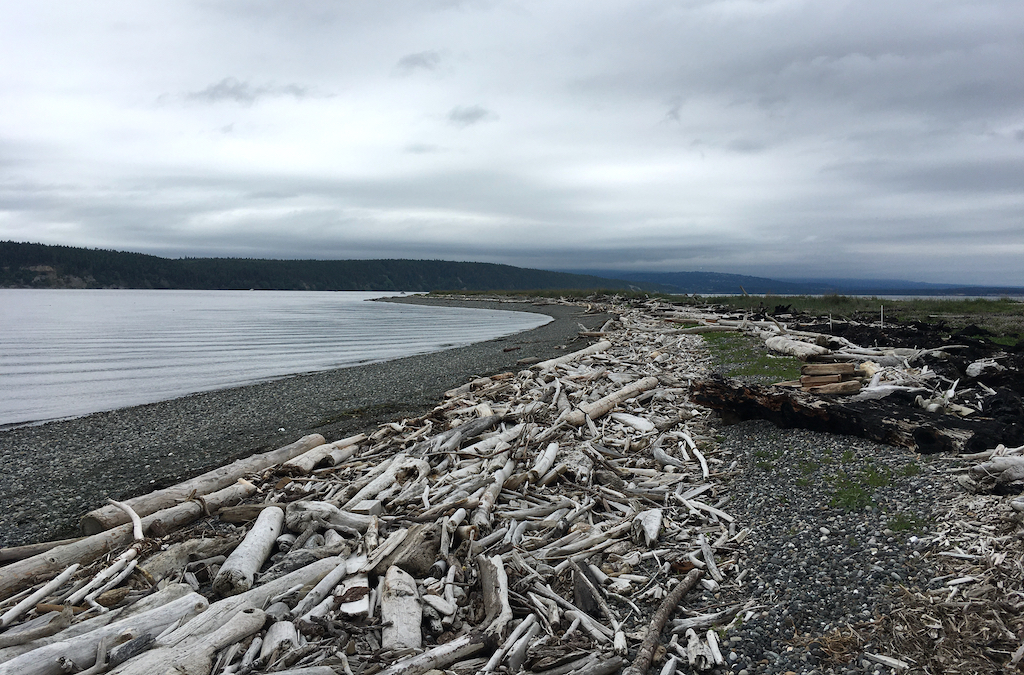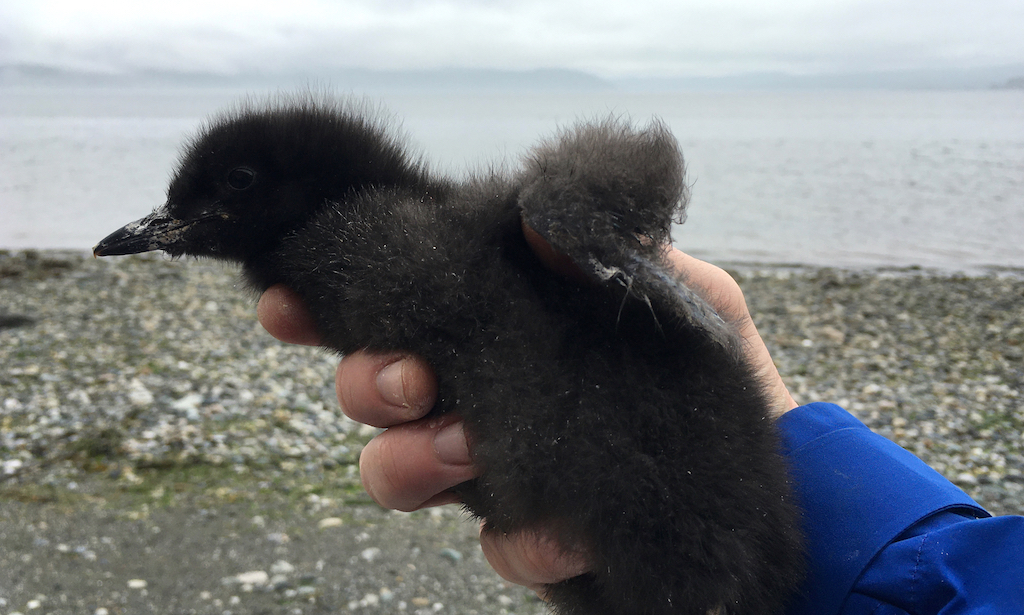The surviving chick in Box 18 is only a couple of weeks old so it is still soft with down, but its legs are strong, and when I remove the nest box’s cover it wedges itself into a corner, peering up at me. I reach in and pick it up. It peeps in protest before hunkering down in the crook of my arm. I reach for the calipers so I can measure its various parts—its bill, its wing, its foot.
The chick is a pigeon guillemot; the nest box it considers home is on Protection Island National Wildlife Refuge, in the Strait of Juan de Fuca off the northern coast of the Olympic Peninsula. Bird and box are part of a study led by Sarah Converse, a biologist at the University of Washington, and Liam Pendleton, her graduate student. (For my part I’m something of a collaborator, in an academic sense.)




